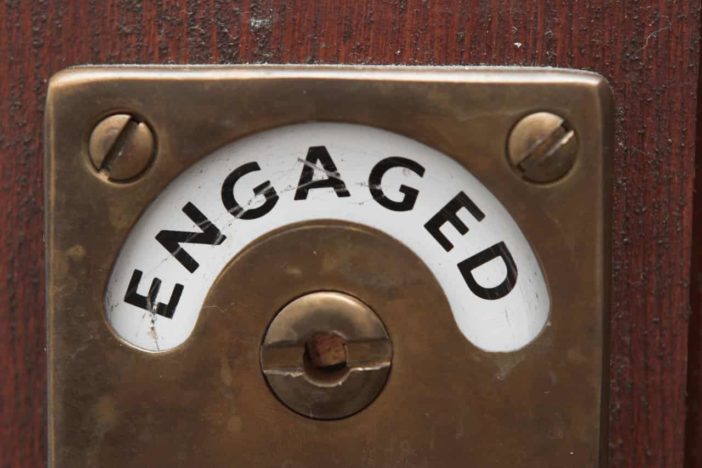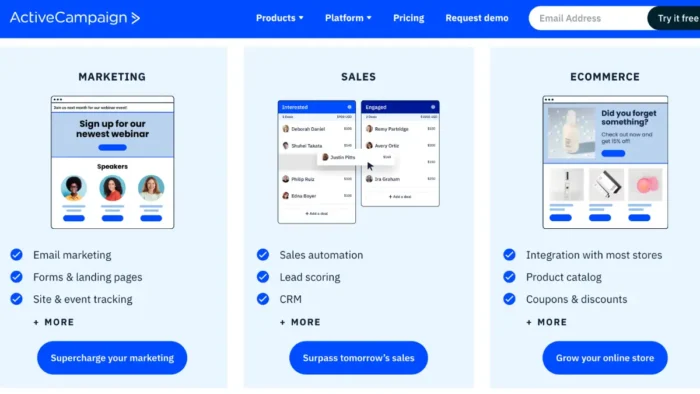Pretend for a moment that you’re a customer. You are visiting a website, and you search for the products you want, add them to your cart, and make the purchase. This seems pretty straightforward, right? However, what if it wasn’t?
In some cases, no matter how you spin it, your website isn’t as good as it could be. Your visitors can’t find what they need. They get confused. They abandon their cart at checkout. Finally, they get bored and move on.
Therefore, you need to ask a few questions:
- Can my visitors find what they need?
- Is the checkout process easy?
- Can visitors find support when they need it?
These questions will help you create a user-friendly experience for your customers, which will increase engagement. In this article, we’ll explain more about user engagement and why it matters- as well as some tips for making your website more engaging for your customers.
What is engagement, and Why Does it Matter?
The term website engagement is more than how your visitors feel when they visit your website. It’s a way to measure how they are interacting with your site, the actions they take, and whether they become a paying customer or not.
All website owners need to be aware of their website engagement and take steps to improve it. So why does website engagement matter?
Visitors make snap judgements about your website
Some experts indicate that you have less than 1 second to make a good impression on your visitors. So you must make that count.
Slow sites lose visitors
If your site runs slow, visitors won’t stay. If you are an eCommerce store, that could result in a major loss in revenue. One study revealed that retailers lost more than $2 billion in sales each year due to slow-loading sites.
Return customers matter
If a visitor has a bad experience on a website, they are not likely to return to it in the future.
Mobile-friendliness is critical
We live in a fast-paced world, and most people browse the internet, especially eCommerce sites, while on the go. Therefore, make sure that you optimize your website for mobile display.
Basically, it comes down to this: website engagement has an effect on how long visitors will stay on your site and whether or not they end up making a purchase.
10 Ways to Make Your eCommerce Website More Engaging
If you want to engage your visitors and increase your sales, consider the following strategies for website engagement.
Logical Structure and Sufficient Whitespace
The way components are placed on your page can impact how your users engage with your site. For example, if things are too close together, the design looks busy, which can be overwhelming for some. Also, he can make it difficult for customers to scan through your products.
Visual hierarchy is essential. This involves organizing your visual element and a pleasing way to help your visitors find what they’re looking for. It involves natural eye movement patterns and putting details in places where they are most likely to be seen by your visitors.
Best Practices for Visual Hierarchy
Here are some things to consider when laying out your site for optimal user engagement:
Size: large elements catch the eye first- therefore, the most important elements should be more prominent. You want them to be seen first.
Contrast: contrasting colors get attention more than colors that don’t have much contrast- therefore, add contrast to essential elements, so they don’t fade into the background.
Whitespace: including whitespace between images/text keeps things from looking cluttered- and clutter is one of the common reasons a visitor will leave a site. They get frustrated due to load times, or they get frustrated because they can’t find anything.
Site Speed and Responsiveness
Have you ever visited a website and then immediately backed out because it was slow in loading? Your visitors feel the same way. If your site is slow, they are likely to go elsewhere to make their purchase. Additionally, Google takes site speed into account when ranking pages.
If you want to boost your website engagement, site speed and responsiveness should be of primary importance. Ideally, it should be loading in 3 seconds or less. If it takes much longer than that, you could be losing out on potential customers.
Straightforward/Logical Structure
Like your visual elements, content should be organized in a user-friendly way, particularly the checkout process, site navigation, and drop-downs. Consider the most natural way to organize these: if a user is here, what is their next logical step?
Avoid being “quirky” with your navigation text and make it as simple as possible. This will keep your visitors from becoming confused and decrease the chances of getting frustrated and leaving.
Vary Content
Avoid limiting your content, as that will potentially limit your visitor engagement and potentially sales. Some of the things that have been proven to increase engagement and traffic are infographics, GIFs, videos, and charts.
Additionally, share content across all of your platforms: website, social media, YouTube, and anywhere else you can think of. This will generate your organic traffic and drive new traffic to your site all because of one piece of content.
Internal Links and Suggested Products
Another great way to encourage engagement and to get customers to add more products to their cart is with internal links. For example, when you include “People also bought…” or “Products you might like…”, you make customers think- and maybe add more to their purchase.
Additionally, internal links help your store crawl by search engines. They are better able to understand the structure of your site, which means they’re more likely to rank your site, which will increase your organic traffic.
For example, if you say “Buy Product” on a review blog post, it might come across as aggressive. However, “Learn More” is more likely to be clicked.
Interactive Site Search
Even if your navigation is straightforward, visitors may still struggle with finding what they are looking for. This is why you need a site search to quickly find what they want without having to dig for it.
Custom 404 Pages
Another way to direct visitors when they can’t find what they are looking for is with custom 404 pages. This can lead them to related content if they don’t find what they want.
For example, if there’s a particular product they are looking for, but the store doesn’t carry it anymore, you can create a 404 page that directs them to similar ones.
Live Chats and Chatbots
There are lots of things that can go wrong on a website that cause visitors to become frustrated. However, this can easily be resolved when customer support is just one click away. Leaving users to figure it out themselves does not create a positive user experience.
Conclusion
As you can see, website engagement is critical and it is what determines the success or failure of a business. If you don’t have engagement, you don’t have customers. However, you can visit Viafoura to fix this potential issue.





